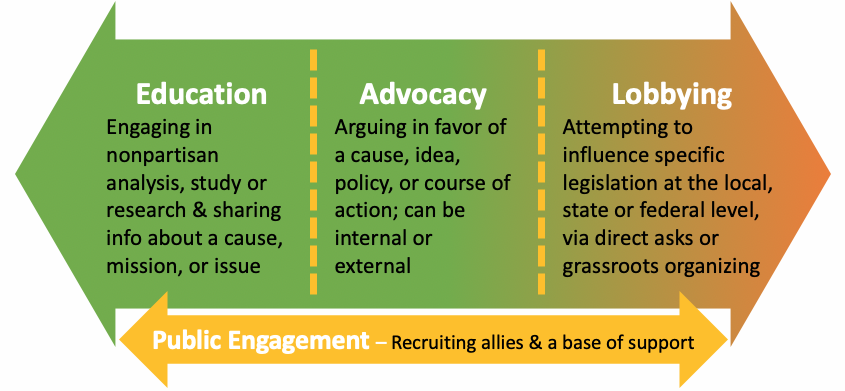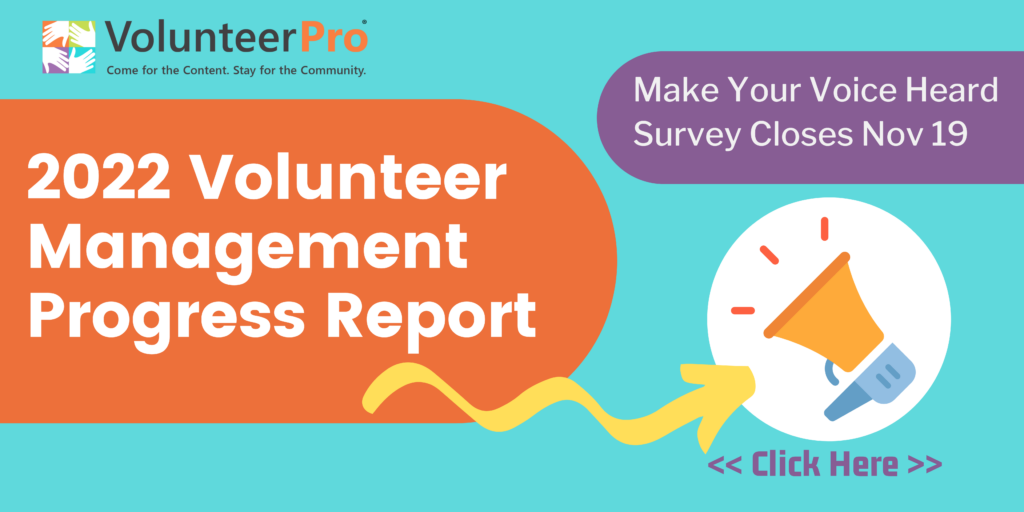
The Best Ways to Advocate for Volunteer Administration
When people ask me what I do, I tell them I work in the world of volunteerism, helping a niche of a niche of a niche of a niche. In other words — a niche (organizations) of a niche (charities) of a niche (nonprofit staff) of a niche (leaders of volunteers). However, in a world where the importance of volunteerism is constantly questioned, most people aren’t aware of what that means.
They look at me like I’m nuts. Go figure.
But, isn’t that how it is?
Do you ever feel like a Russian Matryoshka doll? That the importance of volunteerism is the teeniest, tiniest doll nesting right in the middle of layers upon layers of systems, people, bureaucracy?
Your volunteers are at the center of the action, but your diminutive size makes it hard to have any power or say in your organization’s business.
Each year the responses to our Volunteer Management Progress Report survey paint a grim picture of under-resources and disheartened leaders of volunteers.
Many feel as if no one in their agency understand the true value of volunteers, let alone what it really takes to engage them successfully through staffing, time, resources, and infrastructure.
Armed with data from our survey, we’ve taken strides to educate and advocate in a journal article, sharing the key challenges volunteer managers face with academia.
But, we also need to become better advocates within our organization and with key decision makers.
At first it may seem daunting, but it is possible to gain the support of people in power to bring about change.
Our champions are out there.
But, we’ve got to put some work in to expand our community of support.
Types of Advocacy for Volunteer Administration
A fundamental piece of effective volunteer administration advocacy and influence is to know your numbers and understand your context. Each year, we strive to provide solid, reliable data via the Volunteer Management Progress Report that organizations can use to benchmark their current activities and capacity and take steps toward a better future.
Over four years of study, we’ve identified a few key data points that volunteer program administrators and champions can use to educate others about the needs of the sector inside their organization, to funders, and to lawmakers.
Internal Advocacy for Volunteer Administration
Based on our research, there are also a number of areas of advocacy for volunteer administration. Here are four.
A Livable Wage
The complex and vital work of leaders of volunteers should be compensated in line with other staff who develop resources (both cash and human) for the organization. However, volunteer manager salaries are often less.
- Consider: How does the compensation for leaders of volunteers compare to those with similar levels of responsibility? How does is relate to others in the field with similar organizational types, levels of professional certification, job titles, etc.
An Accurate Job Title
While “Volunteer Coordinator” is the most commonly-used job title, this moniker often belies the true nature of the work and the sheer number of FTEs — in the form of volunteer talent — the person is responsible for.
- Consider: How does the job title compare with others with similar responsibilities, program models, organization size, etc.? Does it align with other job titles across the organization?
Adequate Resources
About one quarter of leaders of volunteers don’t have adequate resources.
- Consider: As subject matter experts, how can leaders of volunteers be brought into the conversation and empowered to assist in budget development? How can donors and funders be educated about the real financial requirements for supporting this vital workforce? What’s more, how can agencies clearly track the true costs of volunteer engagement instead of commingling them with other line items.
Investments in Innovation
While the majority of the public (regardless of age) is online and communicates regularly via digital channels, many volunteer organizations have yet to make strides in this space.
- Consider: How can staff build the skills and knowledge needed to bridge the digital divide? What resources and tools will help develop next generation communications strategies?
External Advocacy for Volunteer Administration
While many of these are internal conversations that organizations should tackle, they might also be brought to larger institutions and funding agents. There are a number of advocacy options and formats that leaders who wish to champion the voluntary sector can tap.
Below are a few, along with definitions for each:
Education: Includes activities that help raise awareness of the issues, but don’t necessarily advocate for a specific legislative solution. These can include educational meetings, preparing and distributing educational materials, or otherwise considering public policy issues in an educational manner.
Internal advocacy: Advocacy within an organization or institution and aims to build organizational and political support for changes in policies, services, funding, or priorities that will benefit staff, the organization, consumers, or the wider community.
Grassroots lobbying: Any attempt to influence legislation by affecting the opinion of the general public. In this case the organization encourages the public to lobby. The organization refers to a specific piece of legislation and provides information to the public on how to contact decision makers. Under certain circumstances mass media ads are an example of grassroots lobbying.
Direct lobbying: Any attempt to influence legislation through communication with any member or employee of a legislative body, or other government official who may participate in the formulation of legislation.
- Direct lobbying is when …
- The principal purpose is to influence legislation
- There is reference to a specific piece of legislation (even if the legislation is not currently under consideration)
- A point of view is expressed.
- Public engagement is a process that spans all activities and brings people together to address issues of common importance. This allows them to solve shared problems through deliberation, dialogue, and action on public issues they care about.
And, yes! Charities in the United States can engage in “some but not too much lobbying,” of which educational activities are not counted. The US Internal Revenue Service (IRS) has set guidelines including specific dollar limits, calculated as a percentage of a charity’s total exempt purpose expenditures.
The Advocacy Continuum

So, consider for yourself. What steps can you take to educate others both inside and outside your organization about the impact, value, and needs of volunteers and those who support them?
What small steps can you take toward a brighter future?
Take 5 Minutes & Make Your Voice Heard
Leaders like you have exhibited phenomenal spirit and dedication in 2021. And we want to ensure that your voices and experiences are heard.
In this survey we will explore the impacts of COVID on both you and your organization over the past year. We appreciation your participation.
Your answers will be anonymous and the survey takes LESS THAN 5 MINUTES to complete. At the end of the survey, you will be able to register for a free Sneak Peek Webinar where we will share the early results exclusively with participants before the general public.








Leave A Comment